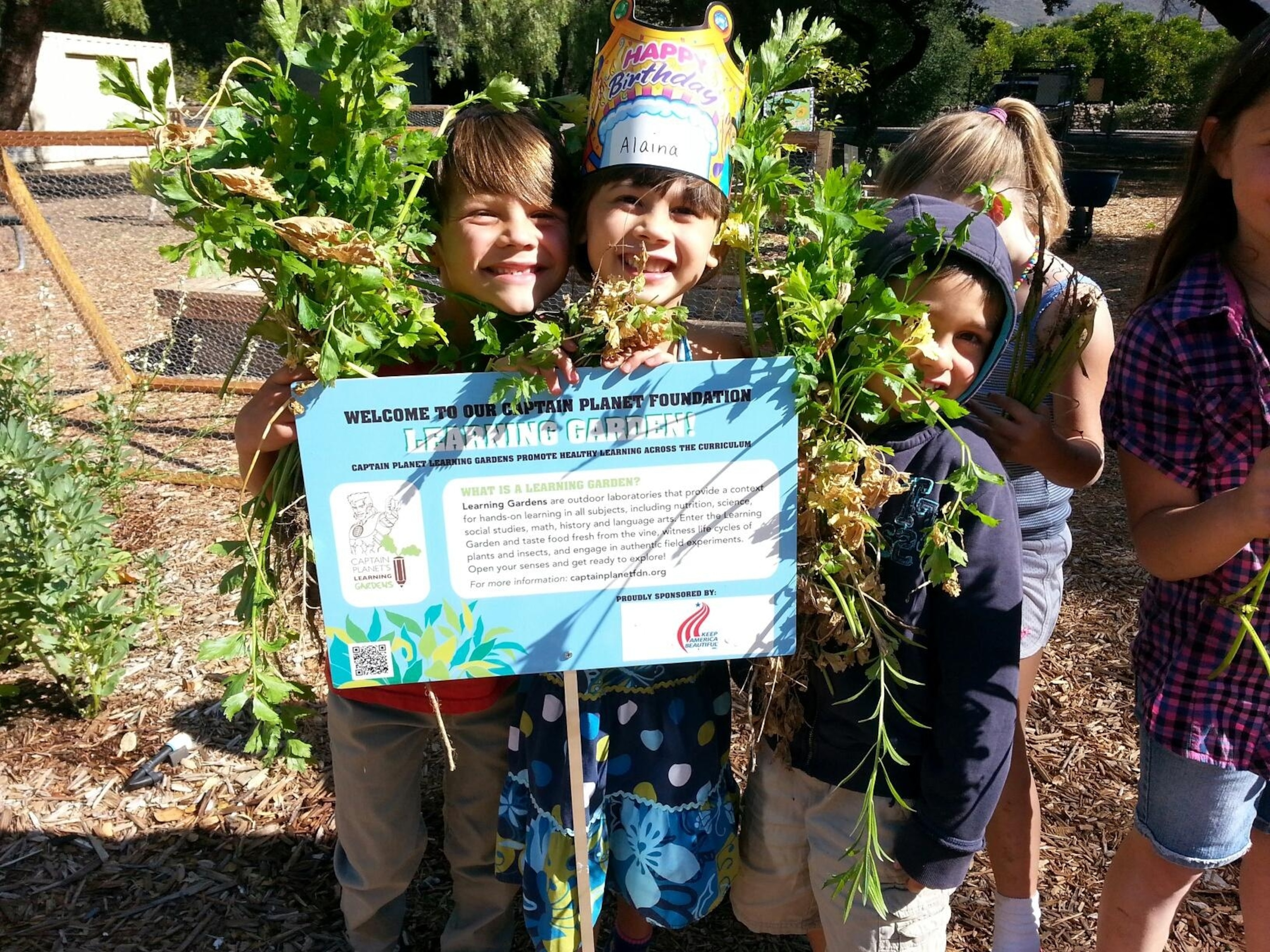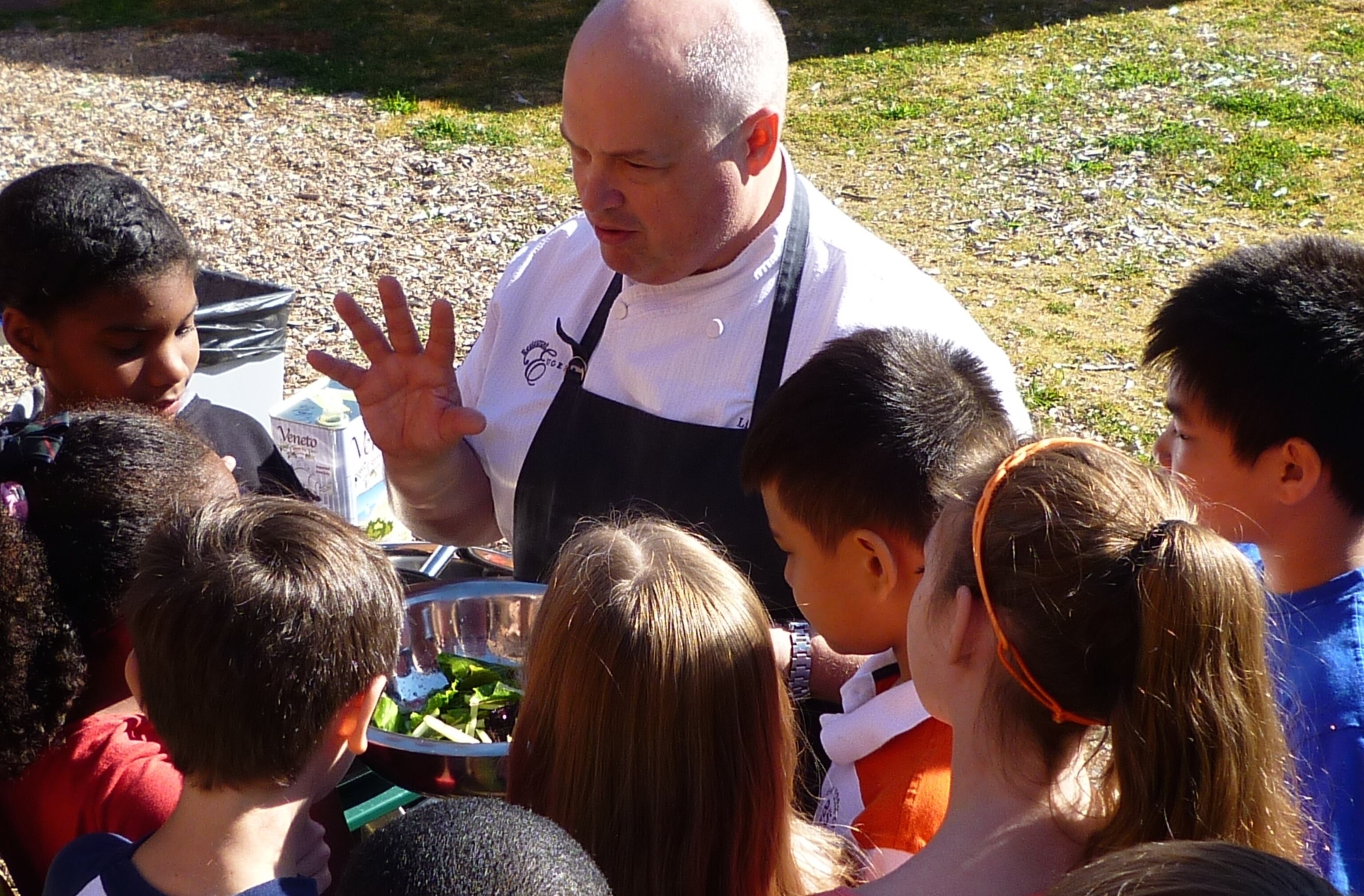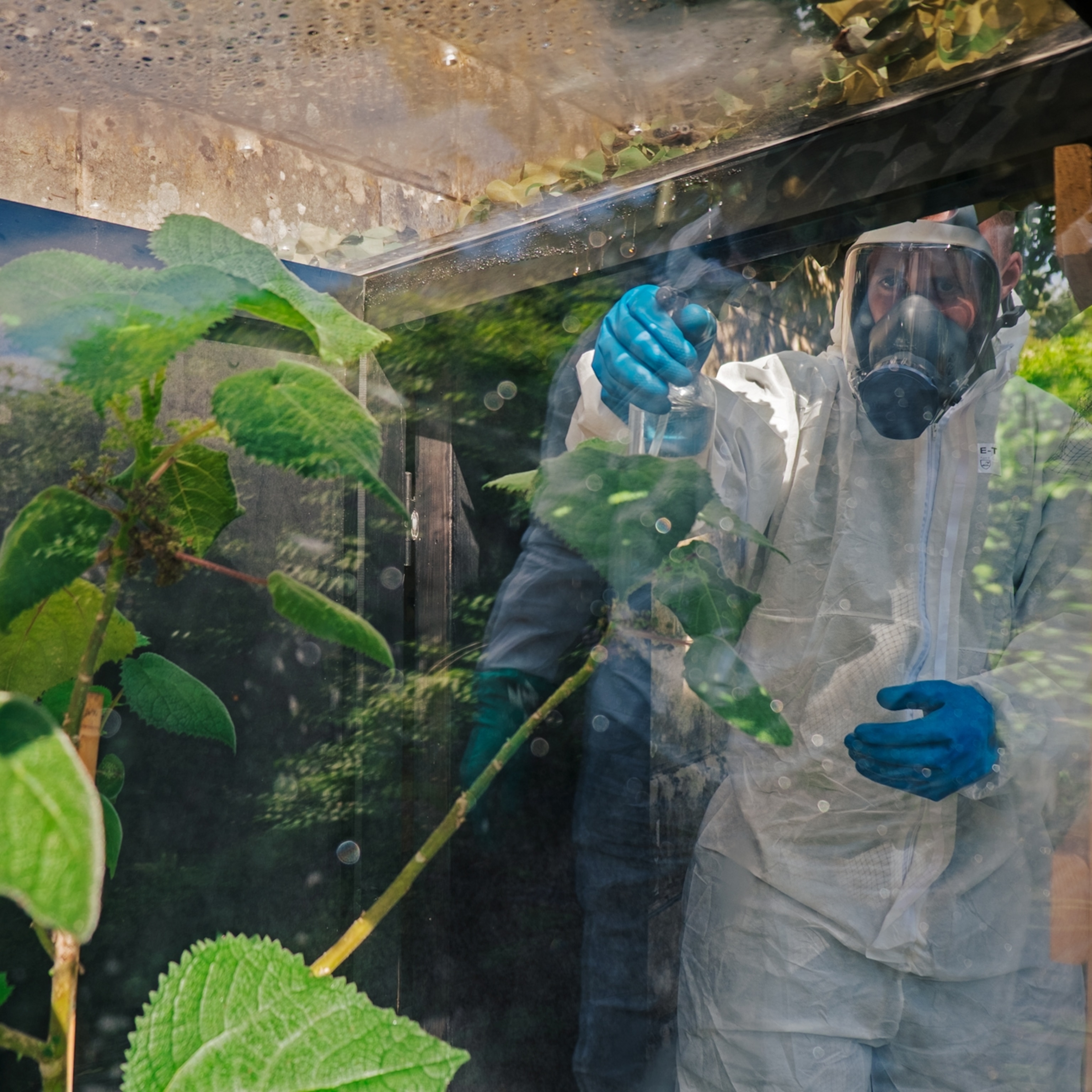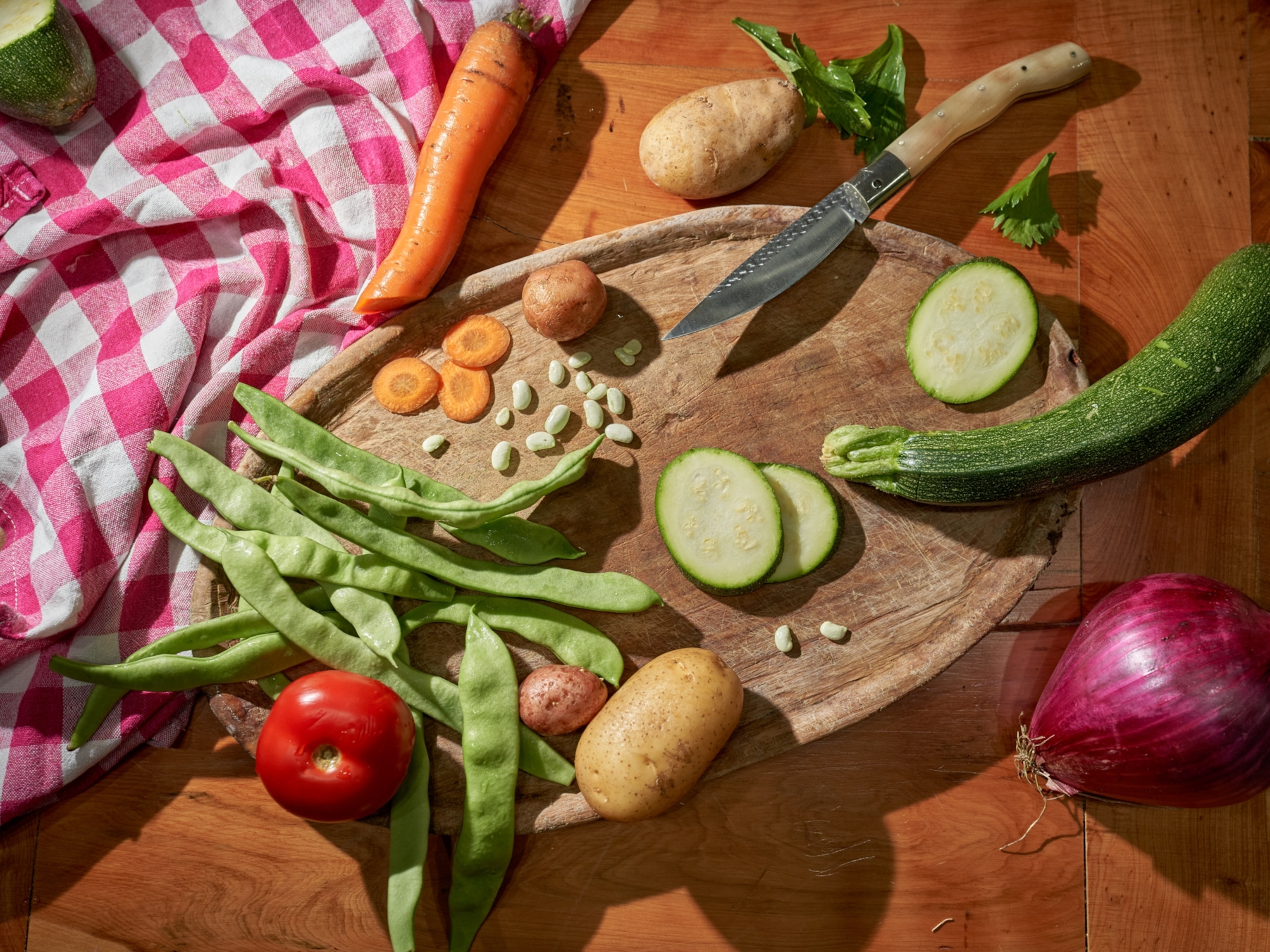
Project Learning Garden: Teaching Kids to Grow Vegetables, Like Math and Love School
Two dozen elementary-school kids watched intently as Linton Hopkins, an award-winning chef with the white coat and expensive knives to prove it, lit a burner under a frying pan, drizzled in olive oil and honey, sliced an orange and squeezed it, tasted the mixture and sprinkled in some salt, and then tossed in double-handfuls of raw broccoli leaves—leaves that had been growing 10 feet away 15 minutes ago, until the kids fanned out across the school garden and picked them.
Hopkins tipped the warm salad into a giant metal bowl, beckoned the kids off their benches, and showed them the result. “Salad’s done,” he said. “Who wants a taste?”
A forest of hands shot skyward and then arrowed into the bowl, burrowing for the glistening leaves, dark and still slightly crisp. The kids shrieked and giggled, licking the warm dressing off their fingers. They dug back in for more.
“No way,” whispered one of the mothers standing behind me. “My kid would be like: ‘Salad. My enemy!’”
I turned around to nod sympathetically. By the time I turned back, the students from Knight Elementary School in Lilburn, Ga. had demolished the salad and were wolfing down plant-based pita sandwiches smeared with a mayonnaise made out of cashews and stuffed with parboiled kernels of roasted green wheat. The moms and teachers looked disoriented. Hopkins, on the other hand, looked pleased, as though he’d just proved a point.
“Kids pursue deliciousness,” he said, watching the group lick their fingers. “The definition of deliciousness is that food is healthy. There’s a goodness to it, and people can taste goodness.”

Off to the side, Leesa Carter looked happy too. The executive director of the Captain Planet Foundation had brought Hopkins out to the exurbs from his downtown Atlanta restaurants to showcase the power of the organization’s Project Learning Garden, a 2-year-old program that builds and supports fruit and vegetable gardens in 125 schools so far. School gardens are not new—the Edible Schoolyard, pet project of chef-doyenne Alice Waters, launched 20 years ago in Berkeley, Calif.—but what distinguishes the foundation’s “learning garden” concept is the breadth of the program’s goals.
“We’re providing students with an opportunity to develop a palate for fruits and vegetables at an early age, of course,” she told me. “But schools also use the gardens as an on-site learning lab, across the board: language arts, math, science, history, health. Where the garden best plugs into the curriculum changes with each grade level.”
For example, Carter said, second-graders learning simple division and graphing and planning might each be assigned one square foot in their school’s garden, asked to choose the plant they want to grow, and then have to work out how many plants will be appropriate for that space: 16 kale plants, perhaps, but only one cabbage. And then, of course, actually plant them, giving the kids a hands-on experience of nature and the environment rather than learning from a textbook or screen.
“There is an idea out there that STEM—science, technology, engineering, mathematics—is somehow special, remote from the rest of learning,” Carter said. “But they’re not. This works best when students understand the relevancy of what they are doing in the garden, and how what they are learning here and in the classroom can be put to use in their real lives.”

The lessons, which are developed by teachers and shared via a wiki, are tied to Common Core and state performance standards, and the national Framework for K-12 Science Education. As part of the program, teachers attend professional development days so they can understand how to work their gardens into a variety of subjects—as well as how to manage classes of kids outside structured classroom space—and schools receive bins of teaching supplies and a “mobile cooking cart” that can be rolled into the garden and hooked up to outside power. (Chef Hopkins used Knight Elementary’s cart to prepare the warm broccoli-leaf salad.)
The Captain Planet Foundation—which, yes, is named for the 1990s animated series on TBS, and was originally that channel’s charitable arm—works with other charitable and service organizations to fund and program the project’s many pieces. One nice innovation: It uses members of FoodCorps, a division of the volunteer nonprofit AmeriCorps, to put the gardens in and maintain them over summers when schools are not in session. That way, anything that ripens over the summer can be donated to food banks, and the gardens are clean and in good shape when teachers return in the fall.
If anything is left, that is. Which, watching the Knight Elementary kids wolf their vegetables, seemed unlikely. “Think of what a struggle it can be every night, trying to get a kid to eat a vegetable,” Carter mused. “When they have planted it and tended it and watched it grow and ripen, they will barely knock the dirt off before shoving it in their mouths.”
Since kids at some point will want to move beyond raw vegetables, the garden project also shows them how to prep and cook the things they grow, and sends them home with age-appropriate recipes. Ten-year-old Ashton Kauffman, a fifth-grader, peppered Chef Hopkins with questions during the Lilburn cooking demo, and then trundled off afterward with the focused gleam of a kid en route to a new toy.

“I cook a lot at home,” he said. “I make mac and cheese, and French toast, but I really like to make salads. I live with my grandparents, and we make tons of salads together. So now I’m going to make this salad for them.”
Project Learning Garden currently operates just in California and Georgia. Schools that are interested in joining the program, or that would like to see it come to their state, can sign up here.








